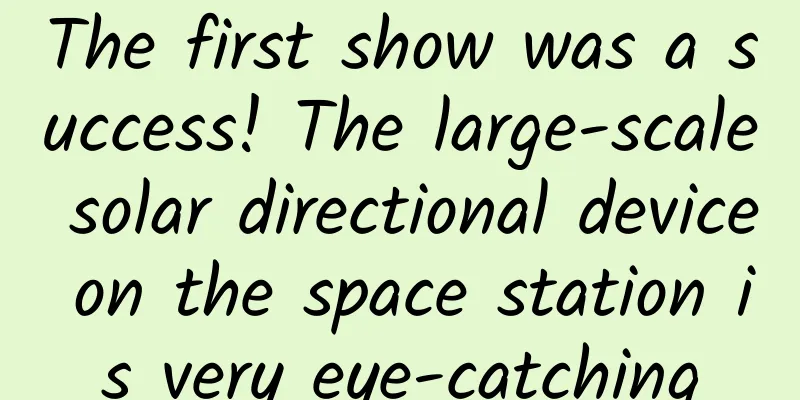Advancing towards the center of the earth: Is it necessary to go deep into the ground ten thousand meters deep?

|
Produced by: Science Popularization China Author: Li Bo (Shaanxi Institute of Biological Agriculture) Producer: China Science Expo In ancient and modern times, both in China and abroad, the gods with boundless magical powers in myths are always described as unfathomable, able to fly into the sky and hide underground. "Going to the sky" and "going into the earth" have always been the dream of mankind to reveal the secrets of nature and expand the boundaries of cognition. Since the Soviet Union successfully launched the first artificial satellite in 1957, humans have successfully explored space countless times. Today, my country's "Tianwen-1" Mars probe has successfully landed on the surface of Mars, and our "Tianhe" space station has also traveled in space. "Going up to the sky" seems to be no difficult task for humans. In comparison, how capable are humans of "going down to the earth"? Why is it necessary to "go underground"? The Earth is the home of mankind, but it also brings various geological disasters such as earthquakes, volcanoes and mudslides to mankind from time to time. In order to survive, humans are eager to understand the Earth. From Dante's "Divine Comedy" depicting the imaginary hell scene to Jules Verne's "Journey to the Center of the Earth" describing the underground world with the sea, mushroom forests and ancient monsters, they all reveal human speculation, imagination and strong curiosity about the deep mysteries of the Earth. In fact, all the material resources needed for human development so far come from the earth. Existing scientific research results show that the underground depth of less than 2 kilometers is groundwater resources and space available to humans; the depth of about 5,000 meters to 10,000 meters is energy and resource space, where there are rich oil, gas, minerals and geothermal resources. It is estimated that if the average mining depth can reach 2,000 meters underground, then my country's mineral and oil and gas resource supply will be able to double on the existing basis. In recent years, my country has continuously discovered some ultra-deep gas fields in Tarim, almost all of which were discovered between 9,000 meters and 10,000 meters underground. Figure 1 The Abyss of Hell, an illustration by Botticelli for Dante’s Divine Comedy in 1480, now in the Vatican Library in Rome (Photo source: Central Academy of Fine Arts) In addition, as the problem of global warming becomes increasingly serious, the use of geothermal energy is also receiving attention. Replacing this deep underground heat energy with power generation or directly applying it to production and life is of great significance to the sustainable development of mankind in the future. At the same time, below 10,000 meters below the surface is the space where natural disasters such as earthquakes and volcanic eruptions occur. The exploration of the Earth's interior is not only beneficial to further solve the resource and energy needs of human development, but also, in the longer term, how to timely predict geological disasters and effectively respond to the global climate change crisis also requires finding answers from the rocks buried underground. How difficult is it to “enter the ground”? However, compared to the empty space, the blue planet we live in with a history of 4.6 billion years has its own unique structure and material distribution. If you imagine the structure of the earth as a salted duck egg, the crust is equivalent to this thin layer of eggshell, with an average thickness of about 33 kilometers. The current record of the deepest exploration of the earth by humans is 12,262 meters created by the Soviet Union on the Kola Peninsula at the end of the last century. Compared with the radius of the earth of more than 6,000 kilometers, this distance is like just a small hole in the surface of the earth. Figure 2 Schematic diagram of the earth's structure (Photo source: veer photo gallery) In fact, since the birth of human civilization, we have been trying to explore underground. As early as around 1500 BC, the word "well" already appeared in the oracle bone inscriptions of the Shang Dynasty in my country. This pictograph vividly shows us that people dug a cylindrical channel from the surface downwards. The purpose is very simple, which is to extract groundwater. Figure 3 The word "well" in oracle bone script of the Shang Dynasty (Photo source: Chinese Character Museum) Some people may wonder, "going into the ground" is just digging downwards, how difficult is that? But in fact, it is easier said than done. After more than 2,500 years of development, by the Northern Song Dynasty, the depth of our drilling had only reached about 130 meters, which was already the world's leading level at the time. There are three main reasons why "entering the ground" is difficult: first, the most important reason is the hard rock barrier on the surface of the earth. It takes huge manpower and material resources to continue to dig down these hard stones. The second is temperature. For every 100 meters of drilling depth, the temperature will rise by 1-3 degrees Celsius, and the pressure will also increase, which is very serious for the damage to the excavation equipment. Finally, there is pressure. Compared with "flying to the sky", which only needs to overcome the influence of gravity and air resistance, the situation faced by "entering the ground" is much more complicated. The rock layers deep in the earth's crust will be affected by various pressures from all directions. Therefore, when drilling deep into the ground to take out the core, the drilled hole formed is affected by the surrounding pressure, and it is easy to collapse and deform, making all previous efforts go to waste. In summary, as the distance into the ground increases, the difficulty of drilling will increase exponentially. Let's take the drilling in the Kola Peninsula as an example. The well was dug in 1970 and reached a depth of 12,000 meters by 1983. However, it took a full decade to go from 12,000 meters to 12,262 meters, a short distance of 262 meters. The money spent on achieving this feat in human history is inestimable. In the end, due to the technical and financial problems at the time, the drilling of the Kola Deep Well was forced to stop in 1992. Throughout history, humans have spent nearly 4,000 years exploring the Earth's interior to a distance less than 2‰ of the Earth's radius. Figure 4 Commemoration of the Kola Deep Borehole breaking through 10,000m in 1980 (Photo credit: pechenga) An "endoscope" that reaches into the Earth's interior Due to the above difficulties, direct observation of the interior of the Earth has been very limited. So far, most of our understanding of the interior of the Earth is inferred through indirect methods such as geophysics. Therefore, if we want to explore the mysteries of the Earth in the most direct way, we must go deep into the Earth to obtain samples and various information. Scientific drilling is the most direct, effective and reliable way to obtain materials deep inside the Earth and understand the information of the Earth's interior. Through scientific drilling of thousands or even tens of thousands of meters, scientists can reveal the material composition and structural structure of the earth's crust, explore the deep fluid system and geothermal structure of the earth, find clues to the origin of life, etc., and thus solve a series of major basic scientific problems. Therefore, scientific drilling is also figuratively called "endoscopic examination" of the earth by scientists. Scientific drilling is mainly divided into ocean drilling and continental drilling, and the world's earliest scientific drilling activities began in the ocean. In the late 1950s, the United States launched the first scientific drilling program, the "Moho Drilling Program", with the goal of drilling through the Moho (the interface between the crust and the mantle). The program started drilling in March 1961, but was forced to terminate in August 1966 due to the high technical difficulty and high cost. Afterwards, the United States launched the Deep Sea Drilling Program (1966-1983) and the Ocean Drilling Program (1985-2002). These two international major scientific projects provided support for verifying the theory of continental drift and plate tectonics. Continental scientific drilling began in the 1970s, starting with the Kola well in the Soviet Union, which is still the deepest well in the world. Afterwards, Germany, France, the United States, Sweden, Canada, Japan and other countries also launched continental scientific drilling projects. The International Continental Scientific Drilling Program, jointly initiated by China, Germany and the United States, was officially launched in 1996. Over the past 27 years, with the strong support of the Party and the State, nearly 10,000 Chinese experts, scholars and technical workers have successively carried out a number of major scientific projects, including the scientific drilling of the Chinese mainland, the scientific drilling of the Wenchuan earthquake fault zone, the scientific drilling of the Chinese mainland environment, and the scientific drilling of the Weihe Basin, achieving unprecedented results for my country's scientific drilling cause. In August 2005, seven academicians went to the Qinghai Lake drilling site (from left to right): Xu Houze, Teng Jiwen, Ding Guoyu, An Zhisheng, Chen Junyong, Zhong Dalai, Liu Jiaqi (Image source: Institute of Earth Environment, Chinese Academy of Sciences) The most representative achievement is the Songke 2 well, which was completed under the leadership of Academician Wang Chengshan. The well is 7,018 meters deep, becoming the deepest well drilled since the establishment of the International Continental Scientific Drilling Program and the world's first scientific well drilled through the Cretaceous strata. These drilling projects have not only achieved a large number of scientific breakthroughs, but also greatly promoted the innovation and development of my country's drilling equipment and technology. Figure 5 Academician Wang Chengshan shows the core sampled from 7018 meters deep in the earth (Image source: Tsinghua University (Beijing) Institute of Science and Technology) On May 29, 2023, the Shenzhou 16 spacecraft was successfully launched. The next day, the China National Petroleum Corporation's Tako 1 well started drilling in the Taklimakan Desert, marking the beginning of the era of "10,000-meter deep wells" in my country. China is about to become the third country in the world to drill 10,000 meters deep on land. Figure 6 10,000-meter deep well - Shendi Tako 1 well drilling started. Photo by Yao Dong (Photo source: China Petroleum News) Advance to the center of the earth! From Chang'e flying to the earth, in the new era, the Chinese are rushing on the road of scientific exploration and innovative development with unprecedented speed and courage. After several generations of earth scientists' hard work, we have used science as a blade and independently developed equipment to drill through the hard rocks that have been deposited for hundreds of millions of years. Today, the Chinese can finally face the 4.6 billion years of history of the earth. Perhaps, the center of the earth is a place we can never reach. However, it reminds us that the journey of mankind is not only to the stars and the sea, but also to the depths of the earth. There is still a long way to go to explore the unknown. Let us hold on to our dreams and bravely move forward to the center of the earth! References: 【1】Zou Changchun et al. Some thoughts and suggestions on the development of scientific deep drilling in mainland China. Modern Geology, 2023, 37(01): 1-14 【2】Xue Qianbing et al. Development and trend analysis of continental scientific drilling engineering technology, Drilling Engineering, 2021, 48(12): 1-6 【3】Wang Zhigang et al. Current status and prospects of drilling and completion of 10,000-meter scientific ultra-deep wells, 2022, 40(13): 27-35 【4】Xu Jingjing et al. Characteristics and development trends of ocean scientific drilling: a comparative analysis based on the scientific framework of the International Ocean Discovery Program, Ocean Development and Management, 2023, 40(03): 30-38 【5】Zhao Tianyu. Advancing to the center of the earth: revealing the secrets of scientific drilling, Beijing Science and Technology News, 2021-04-19 |
<<: Why mosquitoes aren't going away? Here's some good news and some bad news
>>: Does drinking coffee cause osteoporosis? How to drink coffee healthily? Click here to read →
Recommend
Happy Labor Day! Remember the "five ones" for health, and don't stop being healthy during the holidays!
Take some time off during the May Day holiday, bu...
What is Baidu’s loan platform called? How about Baidu Youqianhua?
1. Platform background Youqianhua is a lending pl...
Microsoft is smart to embrace Android and iOS
[[134845]] Since the new Microsoft CEO Satya Nade...
The underlying logical understanding of marketing planning!
Maybe we all have encountered this problem: Why d...
Why doesn't it rain diamonds on Earth?
Recently, a US scientific research team inferred ...
Always there but often ignored, this "multi-faceted player" is actually the "killer weapon" of the intestine
One autumn day, children from a middle school in ...
Fold up the small table, open the sunshade...Why are there so many "strange" rules when flying?
Compared to taking a train or a car, taking a pla...
iOS 14 exposure: Apple is expected to allow users to change the default browser
For a long time, iOS has been a bit inhumane, in ...
Faced with the endurance dilemma, Tesla's long-termism will bring greater pressure to domestic new forces
After being delayed for half a year, Tesla's ...
An inconspicuous small business with huge profits, learn about Blue Ocean Products’ “winter magic weapon” – the heated down jacket!
In this era of popular online earning, some "...
Why has the appearance of MacBook Air remained unchanged for 4 years?
Since 2010, Apple's MacBook Air series of lapt...
There is a way to save your old iPhone. Changing the region to France will make it run much more smoothly. I tried all three iPhones.
In the past two days, a statement suddenly spread...
Electric Technology Car News: 7 seats + DCT SAIC's new Baojun 560 can save the declining sales
I believe everyone is familiar with the Baojun 56...
CINNO: China's new energy industry investment scale will exceed 9 trillion yuan in 2022
As my country's industrialization system beco...
Is it true that Pinduoduo video can withdraw money? How to play?
Now many e-commerce platforms, including short vi...









